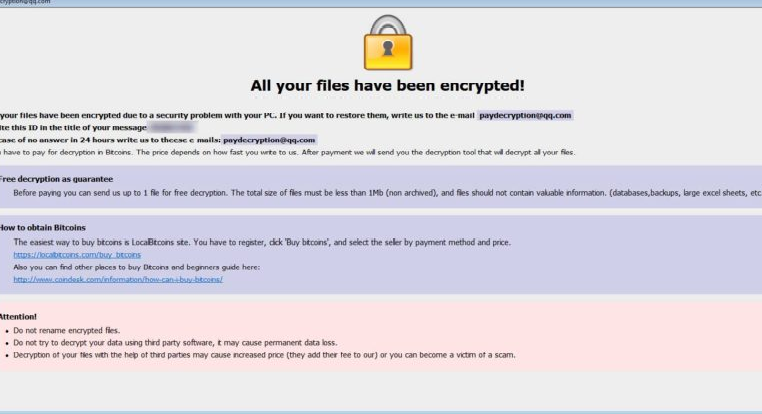Palo Alto Network researchers discovered a new malware, tracked as XBash, that combines features from ransomware, cryptocurrency miners, botnets, and worms
Security researchers at Palo Alto Networks have discovered a new piece of malware, dubbed XBash piece that is targeting both Linux and Microsoft Windows servers.
Xbash was developed using Python, then the authors converted into self-contained Linux ELF executables by abusing the legitimate tool PyInstaller for distribution.
The malicious code combines features from different families of malware such as ransomware, cryptocurrency miners, botnets, and worms.
“Xbash has ransomware and coinmining capabilities. It also has self-propagating capabilities (meaning it has worm-like characteristics similar to WannaCry or Petya/NotPetya).” reads the analysis published by Palo Alto Networks.
“It also has capabilities not currently implemented that, when implemented, could enable it to spread very quickly within an organizations’ network (again, much like WannaCry or Petya/NotPetya).”
The malicious code was attributed to a popular crime gang tracked as the Iron Group.
The Iron cybercrime group has been active since at least 2016, is known for the Iron ransomware but across the years it is built various strain of malware, including backdoors, cryptocurrency miners, and ransomware to target both mobile and desktop systems.
“In April 2018, while monitoring public data feeds, we noticed an interesting and previously unknown backdoor using HackingTeam’s leaked RCS source code.” states the report published by Intezer.
“We discovered that this backdoor was developed by the Iron cybercrime group, the same group behind the Iron ransomware (rip-off Maktub ransomware recently discovered by Bart Parys), which we believe has been active for the past 18 months.”
Thousands of victims have been infected by malware used by the crime gang.
Now the experts from Palo Alto Networks discovered the new XBash malware strain that combines botnet, coinmining, ransomware, and self-propagation. The botnet and ransomware features are observed in infections of Linux systems, while a coinminer behavior was seen in infections of the Windows servers.
The Xbash authors have implemented scanning capabilities used by the malware to search for vulnerable servers online. The malicious code search for unpatched web applications that are vulnerable to a series of known exploits or to brute force attack with a dictionary of default credentials.
“When Xbash finds a destination has Hadoop, Redis or ActiveMQ running, it will also attempt to exploit the service for self-propagation.” continues the report.
“Three known vulnerabilities are targeted:
- Hadoop YARN ResourceManager unauthenticated command execution, which was first disclosed in October 2016 and has no CVE number assigned.
- Redis arbitrary file write and remote command execution, which was first disclosed in October 2015 and has no CVE number assigned. This is shown below in Figure 6.
- ActiveMQ arbitrary file write vulnerability, CVE-2016-3088.”
The malware can infect Windows systems, only after the compromise of a vulnerable Redis server.
The scanner component also scans the Internet for servers that run services that have been left online exposed without a password or are using weak credentials. The scanners target web servers (HTTP), VNC, MariaDB, MySQL, PostgreSQL, Redis, MongoDB, Oracle DB, CouchDB, ElasticSearch, Memcached, FTP, Telnet, RDP, UPnP/SSDP, NTP, DNS, SNMP, LDAP, Rexec, Rlogin, Rsh, and Rsync.
Hackers attempt to monetize their efforts through coin-mining activities on Windows systems or with ransomware based attacks on Linux servers running database services.
The XBash component will scan and delete MySQL, MongoDB, and PostgreSQL databases and drops a ransom asking for the payment of 0.02 Bitcoin ($125) to recover them.
Unfortunately, victims will never recover their data because the malware wipe data and not back it up.
“we have observed three different bitcoin wallet addresses hard-coded in the Xbash samples. Since May 2018, there are 48 incoming transactions to these wallets with total income of about 0.964 bitcoins (about US$6,000 at the time of this writing).” continues the analysis.
“the funds are being withdrawn, showing us that the attackers are actively collecting their ransom.”
Experts noticed in all versions of Xbash the presence of a Python class named “LanScan” used to target enterprise networks. The class allows to get local intranet information, generate a list of all IP addresses within the same subnet, and to perform port scanning to all these IPs
The code is still not active in the malware, likely crooks are working on its development.
Experts believe XBash will continue to evolve, for example including the miner component for Linux servers as well.
Further info, including IoCs, are reported in the analysis published by the experts.
To read the original article:
https://securityaffairs.co/wordpress/76305/malware/xbash-malware.html

